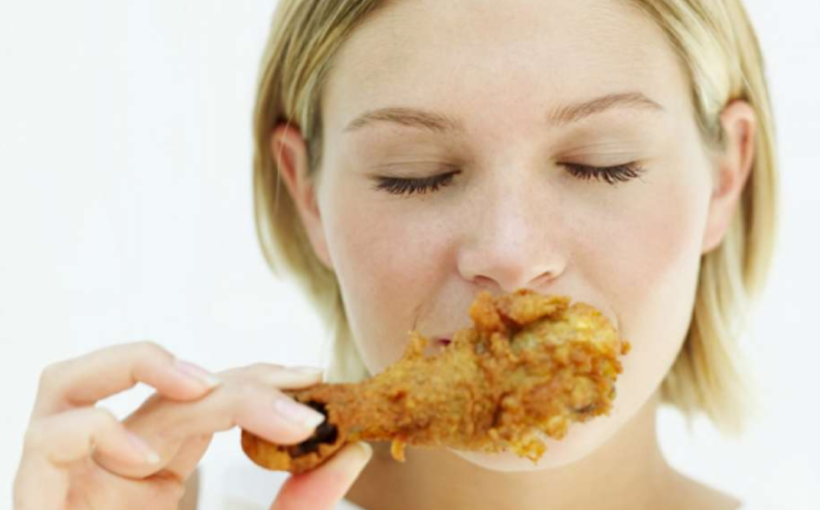Researchers analysed the diets and cooking methods of 42,012 women who took part in the Sister Study. The women, who were aged 35-to-74, had never been diagnosed with breast cancer, but had a sister or half-sister who battled the disease. After around seven years, 1,536 cases of invasive breast cancer had been diagnosed among the participants. Invasive breast cancer is defined as malignant cells that grow through the lining of the ducts into the surrounding breast tissue.
Changing steak, sausages and game for chicken reduced cancer risk by 28 per cent. Red meat contains cancer-causing compounds, while poultry is linked to ‘low mutagenic activity’, reduced ‘internal’ stress and decreased DNA damage. One expert was quick to point out, however, the study only looked at women with a family history of breast cancer. Its participants may therefore be genetically at-risk of the disease, with the results not necessarily applying to the general population, she said.
Women who ate the most red meat were 23 per cent more likely to develop breast cancer than those who consumed the least.While women who ate the most poultry were 15 per cent less likely to end up battling the disease than those who consumed the least. The associations were particularly strong among the post-menopausal women, the researchers found. And the results remained the same after the researchers took race, obesity, exercise, alcohol consumption and other dietary factors into account.
No association was found between ‘cooking practices’, such as frying versus grilling, and the onset of breast cancer. Red meat is made up of the iron-containing compound heme, and is also rich in fat and N-glycolylneuraminic – all three have been linked to ‘tumour formation’. According to the World Health Organization, cancer-causing chemicals, such as N-nitroso compounds, are produced when red meat is processed. Cooking red meat also produces chemicals such as heterocyclic aromatic amines, which are known or suspected carcinogens. Unlike red meat, chicken is relatively low in fat.
Source: US National Cancer Institute


